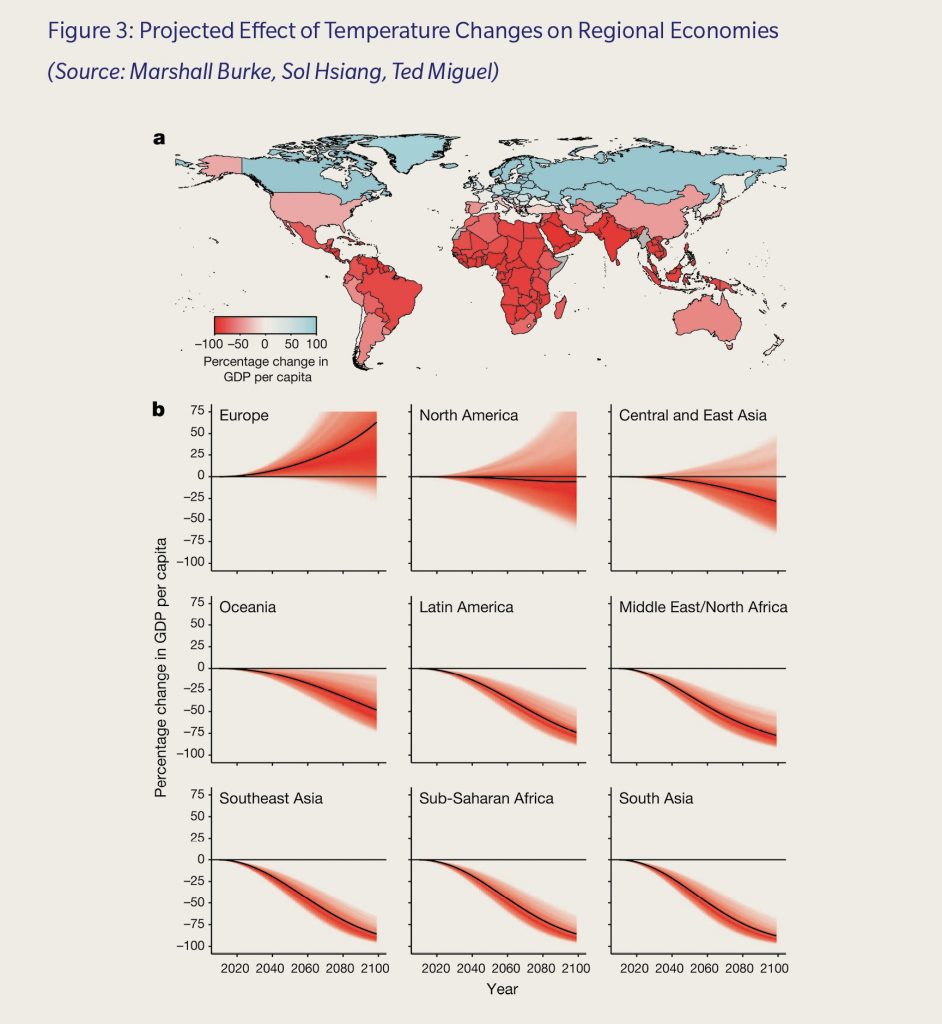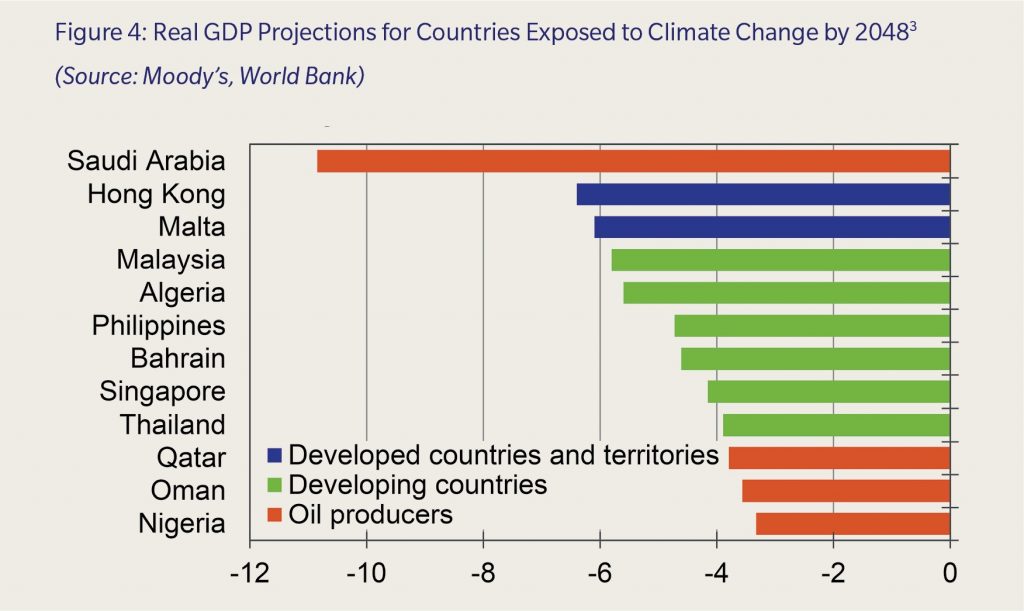
The dynamics of climate change need to be understood and managed. Protecting our Planet and the Public Purse, a recently published report by Guy Carpenter, explores a range of potential climate change scenarios and the risks they present for public sector entities. Climate scientists and global policymakers have simplified the multitude of risks associated with global warming into the following three major categories:
- Physical risk: direct damage to assets by weather and climatic events.
- Transition risk: the potential that an abrupt transition to a low-carbon economy causes investments to lose value.
- Liability risk: the risk of being sued for playing a part in creating climate change.
The social, economic and quality of life impact of these three risks will manifest differently around the globe over the next several decades. The scale of change will vary significantly by location: some regions are likely to be affected more slowly (and marginally) by climate change while others will feel the effects more suddenly (and significantly).
Sea level rise, higher temperatures and more extreme weather events are just three consequences that are likely to cause widespread damage. Individuals, governments and every business sector are likely to be impacted by climate change. Companies dependent on natural resources such as farming, fisheries and tourism could face an existential threat.
Infrastructure is also likely to come under strain as transportation routes and energy production lines are affected. Bridges, tunnels and rail systems could degrade quickly, impacting the transportation of goods and services. Such significant impacts to local communities could cause major displacement of homeowners and significantly alter, or even disrupt, supply chains.
ECONOMIC CONSEQUENCES
A recent study carried out by Moody’s Analytics predicts the economic consequences of climate change through six impact channels – sea level rise, human health effects, heat effect of labor productivity, agricultural productivity, tourism and energy demand.
Referring to projections included in the most recent IPCC report, Moody’s says that climate change could cost the global economy close to USD 70 trillion under a warming scenario of 2°C. To put this in context, global GDP totaled approximately USD 80 trillion in 2019.
These headline estimates could nevertheless be considered conservative, given many predictions for global temperature change exceed these targets. Figure 3 shows the potential consequences of a higher emissions scenario (RCP8.5). Impacts by region will be uneven: most countries could see significant economic deterioration, while others, particularly North American and European nations, are likely to be less affected.

Breaking impacts down further shows that two groups of countries are most likely to be affected negatively by climate change: nations in hot climates, particularly emerging economies such as Malaysia, Algeria, the Philippines and Thailand, and oil producers such as Saudi Arabia, Qatar and Oman (see Figure 4). The first group will suffer tourism and productivity impacts while the second will also have to navigate falling oil prices and its huge impacts on government revenues.

Read Protecting our Planet and the Public Purse >>
Footnotes: Fig 3: a, b, Change in GDP per capita (RCP8.5) relative to projection using constant 1980–2010 average temperatures. a, Country-level estimates in 2100. b, Effects over time for nine regions. Black lines are projections using point estimates. Red shaded area is 95 percent confidence interval, colour saturation indicates estimated likelihood an income trajectory passes through a value. Fig 4: Based on the ‘business as normal’, highest emission scenario RCP 8.5.